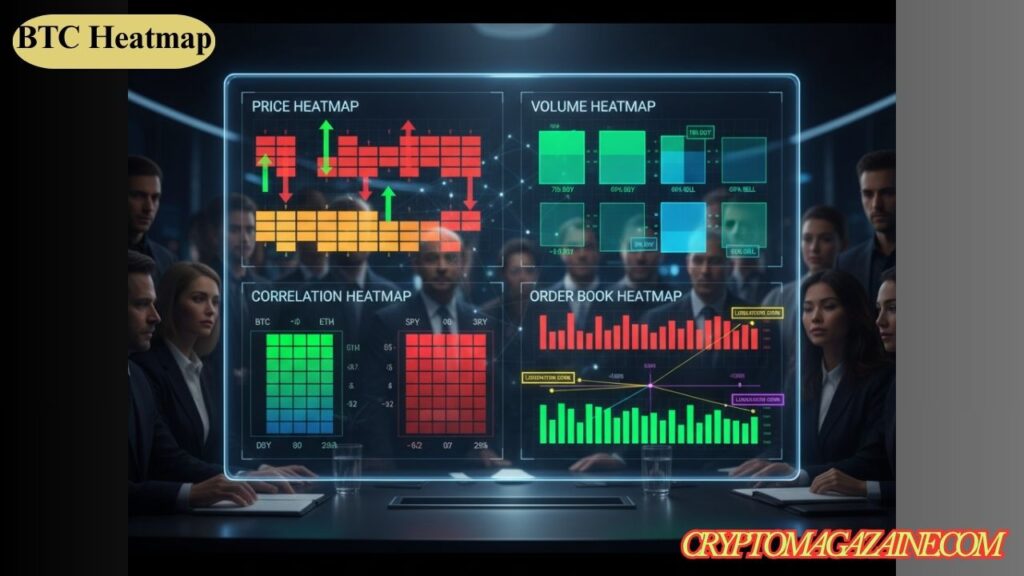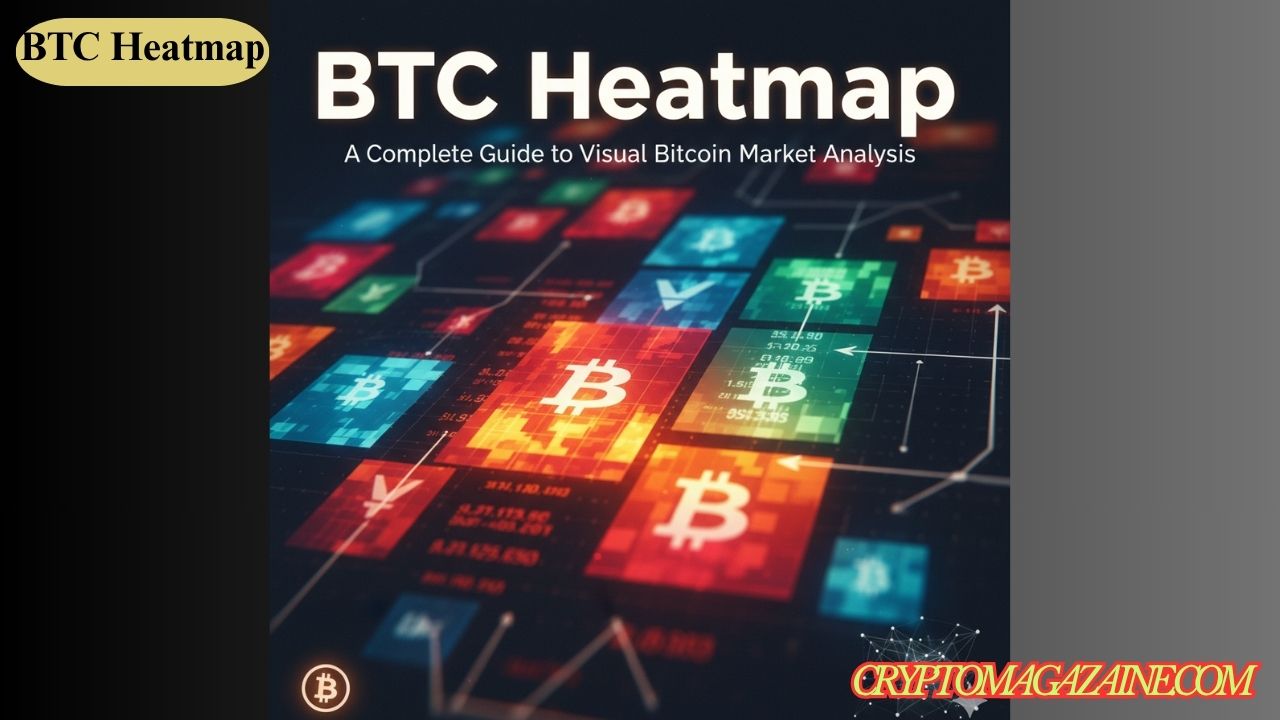Introduction
Cryptocurrency traders constantly seek tools that give them an edge in the volatile Bitcoin market. A BTC heatmap stands out as one of the most powerful visual aids available, transforming complex market data into intuitive, color-coded displays that anyone can understand.
These innovative visualization tools have revolutionized how traders approach Bitcoin analysis. Instead of wading through endless rows of numbers and price charts, a heatmap BTC display presents critical information at a glance, making it easier to spot patterns, identify opportunities, and avoid potential pitfalls.
The benefits of incorporating heatmaps into market analysis strategies are substantial. Traders gain immediate insight into price movements, volume distributions, and critical levels where significant market activity occurs. Whether someone is a seasoned professional or just starting their crypto journey, understanding how to leverage these tools can dramatically improve decision-making and trading outcomes.
Understanding BTC Heatmaps

At its core, a Bitcoin heatmap represents a sophisticated method of displaying market data using color gradients. Think of it as a thermal image of the Bitcoin market, where different temperatures reveal different types of activity and interest levels.
These visualization tools display various types of data that matter most to traders. Price movements appear as shifting color patterns, volume concentrations show where the most trading activity happens, volatility indicators highlight periods of market turbulence, and correlation data reveals how Bitcoin moves in relation to other assets.
The color coding system typically follows an intuitive pattern. Warmer colors like red and orange represent higher values or intense activity, while cooler colors such as blue and green indicate lower values or calmer market conditions. This visual language allows traders to process information much faster than traditional numerical displays.
Time frames and granularity options vary depending on the specific tool being used. Some heatmaps offer second-by-second updates for day traders, while others provide hourly, daily, or even weekly views for those taking longer-term positions. The flexibility to switch between different time frames makes these tools valuable for traders with various strategies.
Types of BTC Heatmaps

Price Heatmaps
Price-focused visualizations track Bitcoin’s value movements across different time periods. These displays excel at showing intraday price movements, helping traders identify the exact moments when significant buying or selling pressure enters the market.
Historical price patterns become immediately apparent when viewed through a heatmap lens. Traders can quickly spot recurring cycles, seasonal trends, and price levels that have historically acted as magnets for Bitcoin’s value.
Volume Heatmaps
Trading volume distribution tells a story about market participation and conviction. A volume heatmap reveals where the heaviest trading activity concentrates, indicating price levels where the most buyers and sellers are actively engaged.
Liquidity visualization represents another critical function. The BTC liquidity heatmap shows exactly where the deepest pools of available Bitcoin sit, helping traders understand which price levels can absorb large orders without causing dramatic price swings.
Correlation Heatmaps
Understanding relationships between different assets provides valuable context for Bitcoin trading decisions. Correlation heatmaps compare BTC movements against altcoins, revealing which digital assets tend to move in tandem with Bitcoin and which march to their own beat.
The relationship between BTC and traditional markets also appears in these visualizations. Traders can observe whether Bitcoin is behaving like a risk asset correlated with stocks or moving independently as a unique store of value.
Order Book Heatmaps
Perhaps the most powerful tool for active traders is the order book visualization. The BTC liquidation heatmap displays critical information about where leveraged positions are concentrated and where mass liquidations might trigger cascading price movements.
Bid and ask depth visualization shows the structure of market orders waiting to be filled. This information reveals support and resistance levels based on actual orders rather than just historical price action. The liquidation heatmap BTC specifically highlights zones where forced selling or buying could create dramatic price moves, giving informed traders opportunities to position themselves advantageously.
Popular BTC Heatmap Tools and Platforms

Several platforms have emerged as leaders in providing heatmap functionality for Bitcoin traders. TradingView offers comprehensive heatmap features integrated into its charting platform, allowing traders to overlay multiple data types on a single display.
Binance, one of the world’s largest cryptocurrency exchanges, provides native heatmap tools that connect directly to real-time trading data. This integration ensures the most current information flows into the visualizations without delay.
CoinMarketCap has expanded beyond simple price listings to include various visualization options. Their heatmaps help traders understand broader market movements and how Bitcoin fits into the overall cryptocurrency ecosystem.
Specialized crypto heatmap platforms have also emerged, focusing exclusively on providing the most detailed and customizable visualization options. These dedicated services often offer features that general-purpose platforms cannot match.
The choice between free and paid options depends on trading needs and budget. Free tools provide solid basic functionality suitable for casual traders, while paid platforms unlock advanced features, faster data updates, and more customization options that professional traders demand.
How to Read and Interpret BTC Heatmaps
Understanding color gradients forms the foundation of heatmap literacy. Hot zones typically appear in red or orange, signaling high activity, strong volume, or potential danger areas depending on the context. Cold zones in blue or green indicate quieter regions with less immediate relevance.
Identifying trends and patterns requires looking beyond individual data points to see larger formations. Clusters of similar colors often reveal areas of agreement among market participants, while sharp color transitions indicate potential turning points or decision zones.
Spotting anomalies and significant movements becomes easier with practice. An unexpected hot spot appearing in a typically cold area might signal emerging interest or an impending breakout. Sudden color shifts across large sections of the heatmap often precede major price movements.
Common interpretation mistakes include overreacting to small color variations, ignoring the time frame context, and failing to confirm heatmap signals with other analysis methods. The most successful traders use heatmaps as one tool among many rather than relying on them exclusively.
Practical Applications for Trading
Timing entry and exit points improves dramatically when using heatmap analysis. A btc liquidation heatmap reveals exactly where stop-loss orders cluster, helping traders avoid entering positions just before a liquidation cascade sweeps through those levels.
Risk assessment and management benefit from understanding where the market’s danger zones lie. By identifying areas with concentrated leverage or thin liquidity, traders can size their positions appropriately and set protective stops in safer locations.
Identifying market sentiment shifts becomes more intuitive with visual feedback. When heatmap colors suddenly change character across multiple indicators, it often signals that market psychology is evolving, giving alert traders advance warning of potential trend changes.
Combining heatmaps with other technical indicators creates a comprehensive analysis framework. Support and resistance levels identified through traditional chart analysis gain additional confirmation when they align with significant zones on liquidity or volume heatmaps.
Advanced Analysis Techniques
Multi-timeframe heatmap analysis allows traders to see the market from multiple perspectives simultaneously. What appears as a strong resistance level on a short-term heatmap might barely register on longer time frames, providing context about whether that barrier will likely hold or break.
Using heatmaps for algorithmic trading has gained popularity among quantitative traders. The data underlying these visualizations can feed into automated systems, allowing algorithms to react to the same patterns that human traders identify visually.
Pattern recognition and backtesting become more sophisticated when incorporating heatmap data. Historical heatmap configurations can be studied to identify patterns that preceded successful trades, creating a library of setups to watch for in current markets.
Integration with trading strategies varies based on individual approach. Day traders might focus heavily on short-term liquidation zones, while swing traders could emphasize liquidity clusters that might support or resist multi-day price movements.
Limitations and Considerations
While powerful, heatmaps don’t show everything. They excel at displaying structured data but cannot capture fundamental factors like regulatory news, technological developments, or macroeconomic shifts that often drive Bitcoin’s price.
False signals and market noise present ongoing challenges. Not every hot zone leads to explosive price action, and not every liquidation cluster gets triggered. Markets constantly evolve, and patterns that worked previously may lose effectiveness over time.
The importance of combining visual analysis with fundamental research cannot be overstated. Understanding why liquidity concentrates at certain levels provides context that pure technical analysis cannot deliver. News events, economic releases, and industry developments all interact with the technical picture.
Real-time versus delayed data considerations affect trading decisions significantly. Some free tools display information with significant delays, potentially showing outdated market structures. Professional traders typically invest in platforms offering real-time data feeds to ensure they’re reacting to current conditions rather than history.
Conclusion
The journey through Bitcoin heatmap analysis reveals a powerful toolkit for modern cryptocurrency traders. These visual instruments transform raw market data into actionable intelligence, helping traders navigate Bitcoin’s volatility with greater confidence and precision.
Key takeaways center on understanding that heatmaps represent one element of successful trading rather than a complete solution. The btc liquidity heatmap shows where capital concentrates, liquidation displays reveal danger zones, and correlation visualizations provide market context. Together, these tools paint a comprehensive picture of market structure and participant behavior.
Best practices for incorporating these tools into daily trading workflows include starting with basic price and volume heatmaps before advancing to more complex liquidation and liquidity displays. Regular review of heatmap patterns builds intuition over time, allowing traders to recognize significant configurations more quickly.
Future developments in heatmap technology promise even more sophisticated analysis capabilities. As blockchain data becomes more accessible and computational power increases, expect heatmaps to incorporate additional dimensions of information, providing ever-deeper insights into Bitcoin market dynamics. Machine learning integration may soon identify patterns invisible to human observers, further enhancing the value these visualization tools provide to forward-thinking traders.
For more Updates: Crypto Magazaine






